Does periods go inside quotation marks or outside quotation marks? What about commas, exclamation points, and question marks?
That’s the question (mark!) being tackled in this article.
Reading articles, such as the one being read right now, stretches brains (figuratively speaking), and a person’s ability to think better. Keep at it while you’re ahead!
Back to the basics: what are quotes?
A quote is text that is a repeated or reproduced passage or phrase from a novel, movie, song or any other outside source.
What’s a quotation mark?
When material or words are copied from its original source to another source, it uses the punctuation mark known as quotes or quotation marks.
Quotation marks signal to the reader that the words within the quotation marks are not the author’s own, but belongs to the other referenced source.
Quotations look like upside down teardrops: ” ” Sometimes they’ll appear as single quotation marks, or a single, sad upside down teardrop: ‘
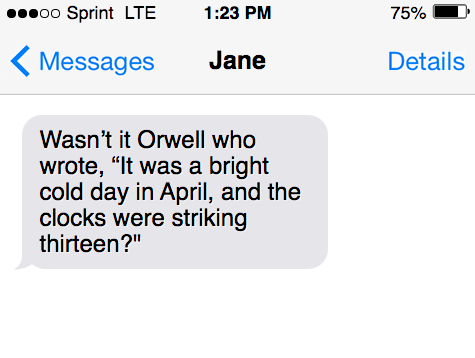
When to use quotation marks?
Include quotation marks in writing when citing:
- Direct speech or direct quotes, (which is the text word for word or verbatim).
- The titles of certain texts and works.
- To imply an ironic or figurative meaning of certain words.
Direct quotations vs indirect quotes
A quick distinction between two very different ways of sourcing material or ideas from another work of writing or speech follow the terms indirect quote and direct quotes.
Indirect quotes are essentially paraphrasing something someone said, and is an approximation of the original text or quoted material, not a direct or word for word copy. Direct quotations, on the other hand, are word for word copies of the original text, and they require the use of quotation marks; whereas indirect quotes do not.
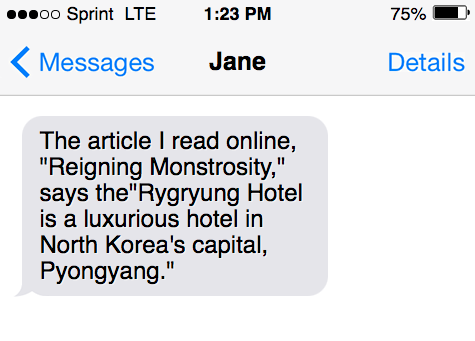
Scare quotes and air quotes
When people use quotes in conversation by gesticulating, this is called air quotes, or scare quotes, informally. Quotes used in this manner are intended to be funny or ironic, and usually mean the opposite of what they’re saying.
An example of a sentence using scare quotes is,“Richmond Hill, an uneventful and dull place, sure is the “hidden gem” of Ontario, Canada!”
Block quotes
Block quotations are longer forms of texts or excerpts pulled from other works, and are separated form the rest of the text. Block quotes are mostly used in academic writing or formal writing, they do not need quotation marks, and they are formatted differently from direct or run-in quotes.
These longer excerpts (block quotes,) are opposite run-in quotes, which uses the same formatting as the surrounding text, and are much more common in writing. Style manuals vary on how long a block quote has to be in order to be considered a block quotation, so see whichever house manual applies should be adopted.
For example, APA style block quotes should be used for “direct quotations that are longer than 40 words.” Block quotes require other formatting guidelines that also vary, so again, check whichever guide is applicable.
Quotation mark rules!
As with most forms of punctuation, there are rules to use quotation marks correctly.
When it comes to the rules of English punctuation, there are two major style guides that are standard:
- British English
- American English
British style vs American style
There are overlaps between the two style guides, still each has their own rules and idiosyncrasies on the correct use of punctuation marks, including the inimitable quotation mark. All this is to say that the first order of business it to determine whether the writing is in British or American English.
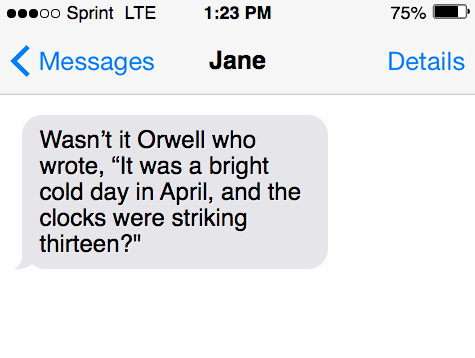
American style is followed in America (in case that wasn’t already obvious), and most parts of Canada, and the British rules are followed in Australia and New Zealand.
American style guide
American style guide uses double quotation marks “
Single quotation marks signify double quotes in the American style. This probably sounds confusing, but don’t let terminology confuse you: double quotes are just quotes within a quote, (think, “quote-ception”, which is not a real word, or even a good joke for that matter).
Put simply, if the quote itself quotes another source, this is where to use the single quotation mark in American English punctuation.

Here’s an example from the first line of the classic novel The Great Gatsby by F. Scott Fitzgerald:
In my younger and more vulnerable years my father gave me some advice that I’ve been turning over in my mind ever since. ‘Whenever you feel like criticizing any one,’ he told me, ‘just remember that all the people in this world haven’t had the advantages that you’ve had.’—The Great Gatsby by F. Scott Fitzgerald.
It’s worth nothing that even within American English, there are numerous style guides to consider consulting before determining the “correct” choice in the adapted format.
Answer American style place periods and commas inside closing quotation marks.
By and large, the convention is to include punctuation inside quotation marks in the American style. This is easily confused because the punctuation might not exist in the quoted material’s original format/writing.
Despite that, the general rule in American style English is that commas and periods go within quotations. The same however does not apply for all punctuation marks, which will be addressed further down.
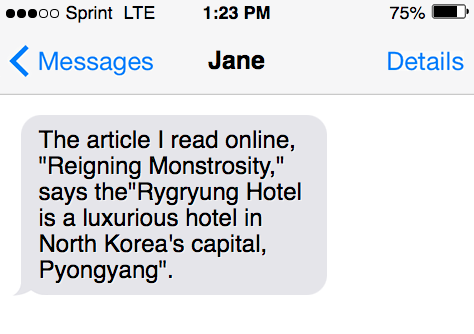
See the example:
Correct: The article I read online, “Reigning Monstrosity,” says the“Rygryung Hotel is a luxurious hotel in North Korea’s capital, Pyongyang.”
Incorrect: The article I read online, “Reigning Monstrosity,” says the“Rygryung Hotel is a luxurious hotel in North Korea’s capital, Pyongyang“.
Other than periods and commas, other punctuation marks such as question marks and exclamation points go outside quotation marks. Both Americans and Brits follow the same rule with the remaining quotation marks.
See the following sentences as an example:
Correct: Wasn’t it Orwell who wrote, “It was a bright cold day in April, and the clocks were striking thirteen”?
Incorrect: Wasn’t it Orwell who wrote, “It was a bright cold day in April, and the clocks were striking thirteen?”
The exception to this rule is when the quoted material already has a question mark or exclamation point written in its original format. If the quoted writing includes the punctuation originally, then it should be included in the quotation marks as well.
Otherwise, if the writer is quoting someone else’s work, and is adding their own exclamation points and/or other forms of punctuation, they are not included within quotation marks.
British style guide
The British style uses the opposite approach from the American, and places single quotation marks to quote someone else’s work. Also in the opposite fashion from the US, the Brits use double quotation marks to indicate a quote within a quote, (think, quote-ception.)
Answer British style place periods and commas outside closing quotation marks.
What’s the story behind the rules?
It’d be reasonable to wonder, “what’s the logic behind any of it?” Turns out, there isn’t much logic to be found in the American style’s including comma inside quotation marks, (and periods.)
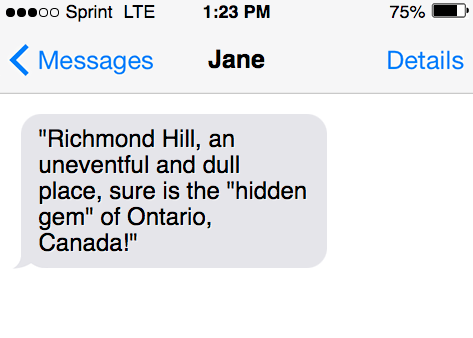
According to an article from Slate Magazine, quoting a director from the MLA (Modern Language Association) the choice to place punctuation before the closing quotation mark was a matter of appearance and aesthetics.
Apparently the convention was adopted to “To improve the appearance of the text. A comma or period that follows a closing quotation mark appears to hang off by itself and creates a gap in the line (since the space over the mark combines with the following word space).”(Modern Language Association.) Other earlier works on grammar corroborates and surely influenced MLA’s present take.
American style?
This means there is no logical reason why the comma and period or full stop goes inside quotation marks. That’s why most other places in the world write in UK English, including Wikipedia, most blogs and websites.
As of now, the American style is rigid on the convention to keep these punctuation inside quotation marks. The Chicago Manual of Style says commas and periods almost always precedes closing quotation mark, “like this,” rather than after, “like this”.
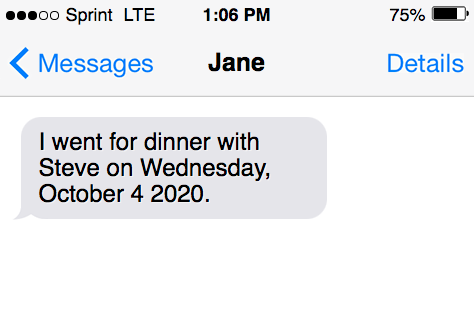
AP style
The Associated Press Style guide is clear on the matter: “The period and the comma always go within the quotation marks.” (AP). The AP gives this example: “The governor said he will ‘leave no stone unturned’ in the matter,” the director said.”
Despite the overall lack of underlying logic to include punctuation inside quotation marks and before closing quotations, the majority of American news and media outlets, such as The New York Times, The Washington Post and all other American news companies adheres to these punctuation rules.
Not surprisingly, the internet and blogs are making these conventions confusing and muddied for the average reader and English writer. It’s become increasingly unclear for most people to distinguish between which is correct and incorrect. Hopefully, by reading the entirely of this article, the difference is made clearer to some.
“Style is liable to be antiquated by time, corrupted by innovation, debased by ignorance, perverted by conceit, impaired by negligence, and vitiated by caprice.” — The Grammar of English Grammars by Goold Brown (1851).
In Review
If you’re American, put the comma and period inside the quotation marks.
If you’re from the UK, do the opposite, (place commas and periods outside the quotation marks.)
If exclamation marks or question marks are not part of the original quote, do not include them within the quotation marks whether you’re writing in American or British style.
Quotes or quotation marks is how quoted material is punctuated, and when writing is used or borrowed from another source the way to indicate this is through quotation marks.
Quotations signify when exact word for word text and phrases have been taken from a passage or source outside the text which is using the punctuation mark.
What about capitalizing the first letter of a direct quote?
When a direct quotation forms a complete sentence, capitalize the first letter within the quotation marks. When a direct quote is an incomplete sentence or a sentence fragment, use lowercase letters.
Check out these other grammar lessons!
Is there a comma before while? When does the word “while” have a comma before it?
What’s an Oxford comma (serial comma)? When is it necessary to use, and when not to use it?
Curious to know whether it’s fullproof, full proof or fullproof? What about beckon call or beck and call? Learn the difference and master the art of English prose.
Other punctuation marks:
For the remaining punctuation marks, the same rules as British style follows.
- Semicolon ;
- Exclamation point !
- Comma ,
- Period .
- Question mark ?
- Em dash —
- En dash –
- Parenthesis or brackets ( )
Glossary
- Semicolon ;
- Exclamation point!
- Comma,
- Period .
- Question mark ?
- Em dash—
- En dash–
- Parenthesis or brackets ( )
Sources
- The Great Gatsby
- “The Reigning Monstrosity”
- “The Placement of a Comma or Period after a Quotation“
- Associated Press
- “The Rise of “Logical Punctuation”
Inside this article
Fact checked:
Content is rigorously reviewed by a team of qualified and experienced fact checkers. Fact checkers review articles for factual accuracy, relevance, and timeliness. Learn more.
Core lessons
Glossary
- Abstract Noun
- Accusative Case
- Anecdote
- Antonym
- Active Sentence
- Adverb
- Adjective
- Allegory
- Alliteration
- Adjective Clause
- Adjective Phrase
- Ampersand
- Anastrophe
- Adverbial Clause
- Appositive Phrase
- Clause
- Compound Adjective
- Complex Sentence
- Compound Words
- Compound Predicate
- Common Noun
- Comparative Adjective
- Comparative and Superlative
- Compound Noun
- Compound Subject
- Compound Sentence
- Copular Verb
- Collective Noun
- Colloquialism
- Conciseness
- Consonance
- Conditional
- Concrete Noun
- Conjunction
- Conjugation
- Conditional Sentence
- Comma Splice
- Correlative Conjunction
- Coordinating Conjunction
- Coordinate Adjective
- Cumulative Adjective
- Dative Case
- Determiner
- Declarative Sentence
- Declarative Statement
- Direct Object Pronoun
- Direct Object
- Diction
- Diphthong
- Dangling Modifier
- Demonstrative Pronoun
- Demonstrative Adjective
- Direct Characterization
- Definite Article
- Doublespeak
- False Dilemma Fallacy
- Future Perfect Progressive
- Future Simple
- Future Perfect Continuous
- Future Perfect
- First Conditional
- Irregular Adjective
- Irregular Verb
- Imperative Sentence
- Indefinite Article
- Intransitive Verb
- Introductory Phrase
- Indefinite Pronoun
- Indirect Characterization
- Interrogative Sentence
- Intensive Pronoun
- Inanimate Object
- Indefinite Tense
- Infinitive Phrase
- Interjection
- Intensifier
- Infinitive
- Indicative Mood
- Participle
- Parallelism
- Prepositional Phrase
- Past Simple Tense
- Past Continuous Tense
- Past Perfect Tense
- Past Progressive Tense
- Present Simple Tense
- Present Perfect Tense
- Personal Pronoun
- Personification
- Persuasive Writing
- Parallel Structure
- Phrasal Verb
- Predicate Adjective
- Predicate Nominative
- Phonetic Language
- Plural Noun
- Punctuation
- Punctuation Marks
- Preposition
- Preposition of Place
- Parts of Speech
- Possessive Adjective
- Possessive Determiner
- Possessive Case
- Possessive Noun
- Proper Adjective
- Proper Noun
- Present Participle
- Prefix
- Predicate



